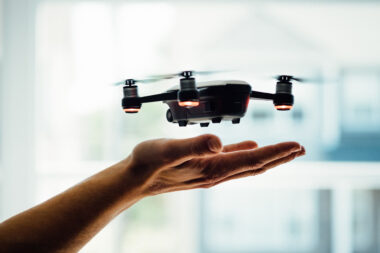Introduction
Intelligent Tutoring Systems (ITS) represent a transformative shift in educational technology, leveraging artificial intelligence (AI), cognitive science, and data analytics to deliver personalized learning experiences. Unlike traditional computer-assisted instruction, ITS dynamically adapts content, feedback, and pacing based on the learner’s real-time performance, cognitive state, and learning trajectory. With advancements in machine learning, natural language processing, and knowledge representation, ITS platforms are becoming increasingly effective in mimicking one-on-one human tutoring.
What Is an Intelligent Tutoring System?
An Intelligent Tutoring System is a computer-based learning environment that uses AI algorithms to assess a student’s knowledge, predict future performance, and deliver targeted instructional interventions. These systems aim to replicate the benefits of personalized tutoring by:
- Modeling the learner’s cognitive and emotional state.
- Adjusting the difficulty and sequence of problems.
- Providing hints, explanations, and corrective feedback.
- Monitoring engagement and adapting pedagogical strategies.
Assessing student’s knowledge using AI algorithm
1. Data Collection and Feature Extraction
AI begins by collecting detailed interaction data during learning sessions, such as:
- Answers to questions (correct/incorrect)
- Response time
- Number of hints used
- Mouse movements, eye-tracking (in advanced systems)
- Engagement indicators (pauses, drop-offs)
Features extracted:
- Accuracy rate per topic
- Time-on-task
- Mistake patterns
- Help-seeking behavior
2. Student Modeling Techniques
The student model represents the learner’s knowledge state and learning trajectory. Common AI techniques used include:
A. Bayesian Knowledge Tracing (BKT)
- Models student knowledge as a probability over time.
- Tracks mastery of individual skills or concepts.
- Uses four parameters:
- P(L₀): Initial knowledge
- P(T): Learning rate
- P(G): Guess probability
- P(S): Slip probability (mistake despite knowing)
P(Ln)=P(Ln−1)×(1−P(S))+(1−P(Ln−1))×P(T)P(L_n) = P(L_{n-1}) × (1 – P(S)) + (1 – P(L_{n-1})) × P(T) P(Ln)=P(Ln−1)×(1−P(S))+(1−P(Ln−1))×P(T)
B. Hidden Markov Models (HMM)
- Learner’s knowledge is modeled as a hidden (unseen) state.
- Observations (correct/incorrect responses) are used to infer this state over time.
C. Item Response Theory (IRT)
- Models the probability of a student answering an item correctly based on their ability level and the difficulty of the item.
P(correct)=1/(1+e−(θ−β))P(correct) = 1 / (1 + e^{-(θ – β)}) P(correct)=1/(1+e−(θ−β))
- θ = Student ability
- β = Item difficulty
D. Deep Learning Models
- Recurrent Neural Networks (RNNs) or LSTM: Used for modeling sequences of student responses.
- Deep Knowledge Tracing (DKT): Learns temporal patterns in student performance using an LSTM to predict the probability of answering the next question correctly.
3. Real-Time Inference and Updating
Each time a student interacts with the ITS:
- The system updates the student model using the observed response.
- Predicts likelihood of correctness on future tasks.
- Adapts the content, difficulty, and pacing accordingly.
4. Output of Knowledge Assessment
The system can generate:
- A mastery probability for each concept (e.g., “Student has 82% mastery in quadratic equations”).
- A knowledge map or concept graph highlighting strong and weak areas.
- A recommendation score for what to teach next based on readiness.
Example:
A student consistently answers geometry questions quickly and correctly, but struggles with trigonometry problems.
The AI model assigns a high mastery score for geometry (>90%) and a low score for trigonometry (<40%), prompting the ITS to:
- Provide remediation in trigonometry
- Delay introduction of more advanced topics dependent on it
System Architecture of ITS
The architecture of a typical ITS comprises four core modules, each responsible for a different aspect of intelligent behavior:
Domain Model
- Represents the knowledge to be taught, often using:
- Knowledge graphs
- Ontologies
- Concept maps
- Rule-based systems
Technologies:
- Prolog, OWL, RDF for rule-based reasoning
- Graph databases for semantic relationships
Student Model
- Maintains a dynamic profile of the learner’s:
- Prior knowledge
- Misconceptions
- Learning styles
- Emotional states
Techniques:
- Bayesian Networks for probabilistic reasoning about knowledge states
- Hidden Markov Models (HMM) to track learning progression
- Fuzzy logic to quantify uncertainty in learner behavior
Pedagogical Model
- Determines the instructional strategy:
- When to give a hint
- When to change difficulty
- How to respond to errors
Algorithms:
- Decision trees for rule-based decision making
- Reinforcement Learning (Q-learning, DDPG) to optimize tutoring policies
- Case-based reasoning for adaptive feedback selection
User Interface Model
- Facilitates communication between the learner and system via:
- Text, speech, gestures, or visual feedback
- Animated agents or avatars
Technologies:
- NLP models for dialogue-based tutoring (e.g., seq2seq, transformers)
- Voice interaction APIs for speech recognition and synthesis
- 3D engines (WebGL, Unity) for virtual tutors
Step-by-Step Technical Process: How an ITS Works
Step 1: Student Login and Initialization
- The learner logs into the ITS platform.
- A user profile is loaded or created, containing:
- Previous performance data
- Learning preferences (if available)
- Cognitive/affective traits (if applicable)
Technologies Involved:
- Secure login APIs, cloud database access (SQL/NoSQL)
- Initialization of session-based data stores
Step 2: Diagnostic Assessment (If New)
- A pre-test or diagnostic quiz is given.
- Early data is collected to initialize the student model.
Techniques Used:
- Item Response Theory (IRT) for initial skill estimation
- Adaptive testing algorithms (e.g., CAT – Computerized Adaptive Testing)
Step 3: Content Delivery Engine
- Based on the current learning goal and model state, appropriate learning content is selected.
How it works:
- Metadata-tagged content units (called Learning Objects) are matched with student knowledge gaps.
- Content can include videos, interactive problems, simulations, or micro-lectures.
Driven by:
- Curriculum Ontologies (concept maps)
- Recommendation engines (using collaborative filtering or content-based filtering)
Step 4: Interaction Monitoring
- The system logs real-time learner interactions:
- Answers submitted
- Time on each item
- Hints requested
- Scrolls, clicks, or keystrokes
- Emotional cues (via webcam/mic in affective ITS)
Hardware/Software Used:
- Embedded sensor APIs
- Event-driven logging systems
- Optional integrations with eye-tracking or EEG devices
Step 5: Knowledge Assessment
- Based on student interactions, the system infers current knowledge state using the Student Model.
AI/ML Algorithms Used:
- Bayesian Knowledge Tracing (BKT)
- Deep Knowledge Tracing (DKT)
- Hidden Markov Models (HMMs)
- RNNs/LSTMs for sequential prediction
- Clustering/Classification for error pattern detection
Outputs:
- Probability of mastery per concept
- Performance prediction on unseen questions
- Identification of misconceptions
Step 6: Adaptive Feedback & Support
- The ITS provides immediate, personalized feedback:
- Encouragement or motivation prompts
- Step-by-step hints or worked examples
- Alternate explanations for common errors
Powered by:
- Rule-based decision trees
- NLP-based hint generation (e.g., using transformers)
- Knowledge graphs for explanation chaining
Step 7: Remediation or Progression
- Based on the updated knowledge state, the system:
- Recommends remedial exercises
- Unlocks the next topic in the learning path
- Adjusts difficulty level dynamically
Driven by:
- Reinforcement Learning agents
- Skill graphs and prerequisite models
- Student engagement metrics (e.g., boredom/frustration detectors)
Step 8: Long-Term Learning Analytics
- The ITS logs session data for longitudinal tracking and:
- Generates learning curves
- Flags at-risk students
- Provides teachers/admins with dashboards
Data Pipeline:
- Stored in cloud databases
- Visualized using BI tools (Grafana, Kibana, etc.)
- Input to future curriculum redesign
Enabling Technologies in Intelligent Tutoring Systems (ITS)
1. Artificial Intelligence (AI) and Machine Learning (ML)
AI forms the core of adaptive intelligence in ITS. It enables the system to model learners, personalize instruction, and make real-time decisions.
Key AI/ML Techniques:
- Bayesian Knowledge Tracing (BKT): Models the probability that a student has mastered a skill over time.
- Deep Knowledge Tracing (DKT): Uses recurrent neural networks (RNNs/LSTMs) to learn patterns in student interactions for predicting future performance.
- Supervised Learning: For predicting student success or misconceptions (e.g., Random Forests, SVMs).
- Unsupervised Learning: For grouping students with similar behavior (e.g., K-means, DBSCAN).
- Reinforcement Learning: Helps the system learn optimal tutoring strategies by maximizing student performance or engagement.
- Natural Language Processing (NLP): Used in hint generation, feedback generation, and conversational interfaces.
2. Student Modeling Technologies
Student modeling is the process of tracking and predicting a student’s knowledge, skills, emotions, and learning preferences.
Components:
- Cognitive Models: Represent what a student knows or doesn’t know (using skill trees or knowledge graphs).
- Affective Models: Detect learner emotions like frustration, boredom, or confusion using sensors or behavioral data.
- Meta-Cognitive Models: Assess self-regulation skills, persistence, and help-seeking behavior.
Tools & Methods:
- Bayesian Networks
- Markov Decision Processes
- Error analysis matrices
- Sensor fusion techniques (for multimodal input)
3. Internet of Things (IoT) and Sensor Integration
Advanced ITS can integrate physical sensors for real-world context or behavior sensing.
Common Sensors Used:
- Eye-trackers: Monitor focus and cognitive load
- Keystroke Dynamics: Infer attention, stress, and expertise
- Webcam-based Emotion Detection: Analyze facial micro-expressions using CNNs
- EEG Headsets (Neurofeedback): Monitor brainwaves for cognitive engagement
These sensors provide input to the Affective Computing Layer for adapting feedback.
4. Natural Language Processing (NLP)
NLP enables intelligent conversations, understanding of free-text answers, and the generation of meaningful feedback.
NLP Applications:
- Semantic Parsing: Converts student input into structured queries
- Question Generation: Uses transformers to create quizzes automatically
- Named Entity Recognition (NER): Identifies key concepts or misconceptions in text
- Intent Classification: Determines what the student is trying to do or ask
NLP Tools:
- BERT, RoBERTa, GPT for language understanding
- DialogFlow/NLTK/Spacy for chatbot interfaces
5. Cloud Computing and Edge AI
ITS platforms rely on cloud infrastructure for scalability and real-time analytics, while edge computing ensures fast response for time-sensitive feedback.
Benefits:
- Cloud-based LMS integration: (Learning Management Systems) for storing and delivering content
- On-device AI Inference: Faster performance for tasks like emotion detection or speech recognition
- Data Lakes and Warehouses: For storing multimodal interaction data at scale
6. Cybersecurity and Privacy Technologies
To ensure safe, compliant, and private learning:
Features:
- Role-Based Access Control (RBAC): To manage student, teacher, and admin permissions
- Secure Authentication: OAuth2.0, JWT, Multi-factor authentication
- Data Encryption: TLS/SSL for transit, AES for storage
- Federated Learning: Allows AI training on decentralized data without violating privacy
7. Learning Analytics and Dashboards
ITS systems provide real-time insights for learners, educators, and administrators.
Technologies Used:
- ETL Pipelines for data preprocessing
- Visualization Libraries: D3.js, Chart.js, Plotly
- BI Tools: Tableau, Power BI, Grafana
- Predictive Dashboards: Built using time-series forecasting or regression models
8. Multi-Modal User Interfaces
ITS platforms offer rich interaction through:
- Touch and gesture recognition
- Speech and voice interfaces (via NLP)
- VR/AR integration for immersive learning (in simulations or medical/engineering training)
- Gamification Engines with progress bars, badges, and adaptive difficulty
Types of ITS Architectures
| Type | Description | Example Use Case |
|---|---|---|
| Rule-Based ITS | Uses if-then logic and pre-scripted paths | Basic math tutorials |
| Constraint-Based ITS | Focuses on violations of predefined domain constraints | Logic programming education |
| Model-Tracing Tutors | Compare student actions against ideal problem-solving paths | Physics problem solvers |
| Conversational ITS | Dialogue-based systems with NLP interfaces | Language learning and argumentation training |
| Affective ITS | Integrates emotion detection for adaptive feedback | Stress-sensitive learning environments |
Advantages of ITS in Modern Education
- Real-time feedback and error correction
- Data-driven curriculum adaptation
- Scalable personalized tutoring
- Continuous assessment without formal testing
- Higher retention and engagement rates
Case Study: Adaptive Math Tutor Using Reinforcement Learning
Scenario: An ITS was implemented to teach algebra to secondary students. The pedagogical model used Q-learning to choose the next problem based on student response time and accuracy.
Key Components:
- Domain Model: Algebra ontology with linked problem types
- Student Model: HMM for knowledge progression
- AI Layer: Q-learning agent trained on reward (accuracy + engagement score)
Outcomes:
- 25% increase in learning efficiency
- 30% reduction in help-seeking behavior
- High alignment between predicted and actual performance
Conclusion
Intelligent Tutoring Systems represent a convergence of AI, cognitive science, and human-computer interaction aimed at revolutionizing personalized education. With the increasing availability of real-time learner data and advancements in adaptive algorithms, ITS offers scalable, precise, and responsive education models that go beyond conventional learning environments. The evolution of ITS into conversational, affect-aware, and multimodal systems signals a future where every learner has access to a personal digital tutor.



